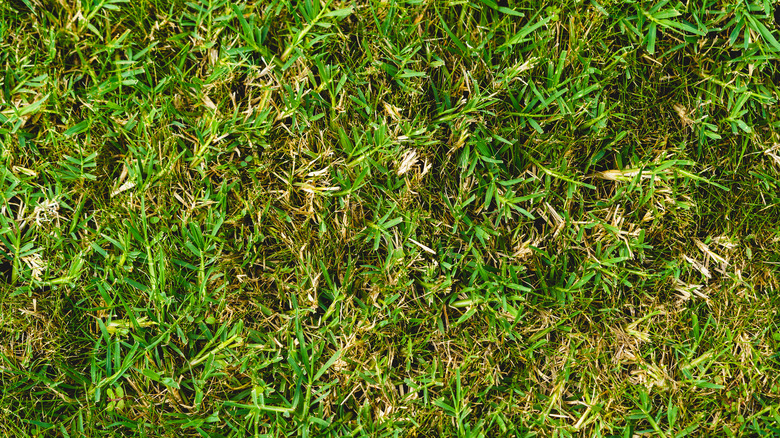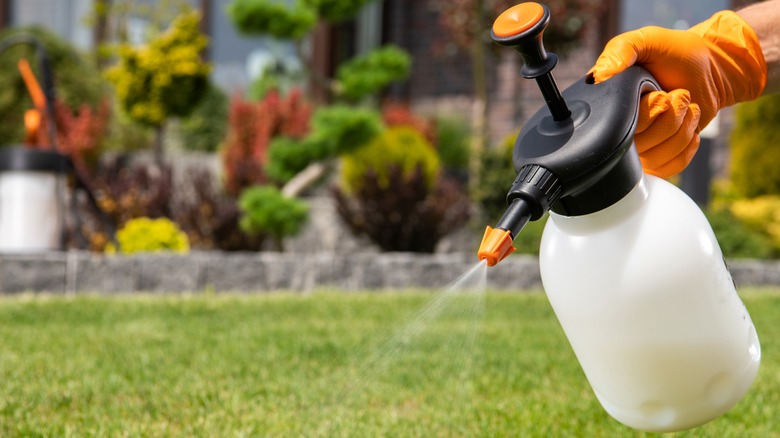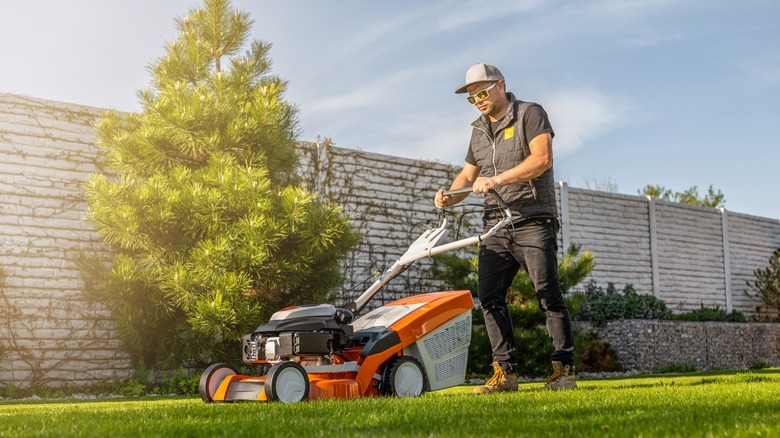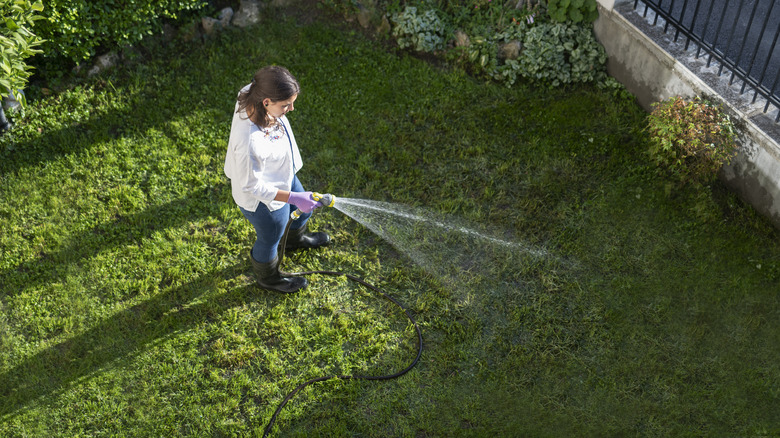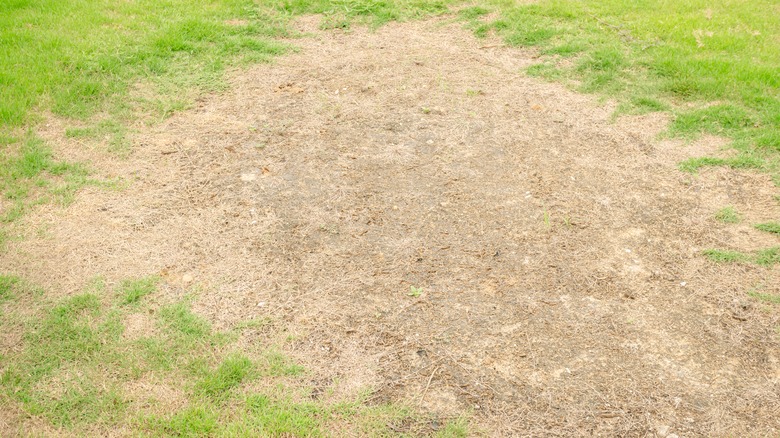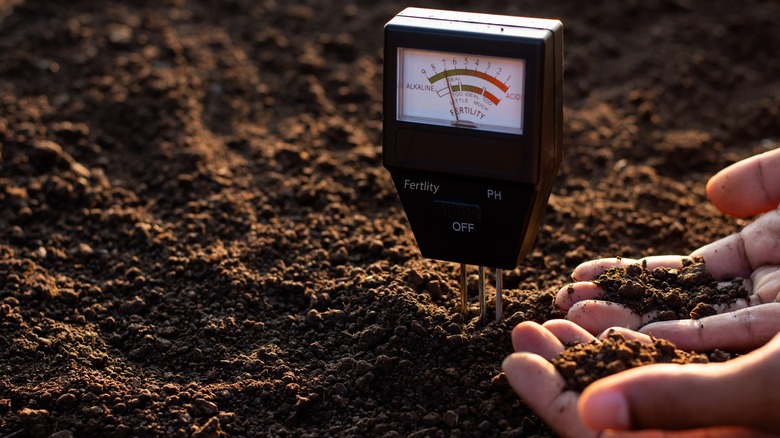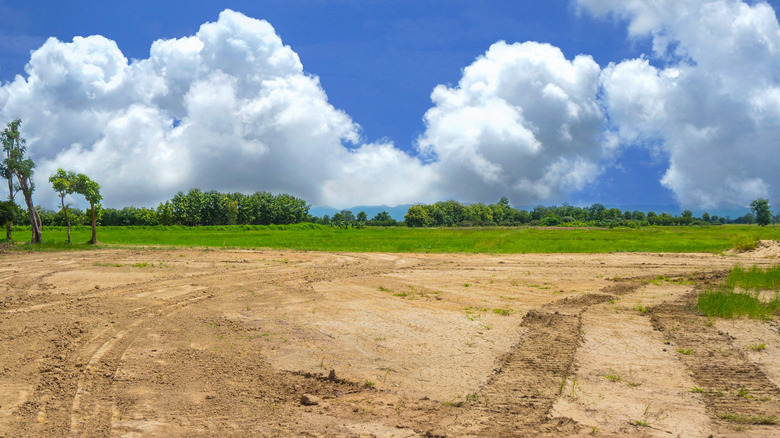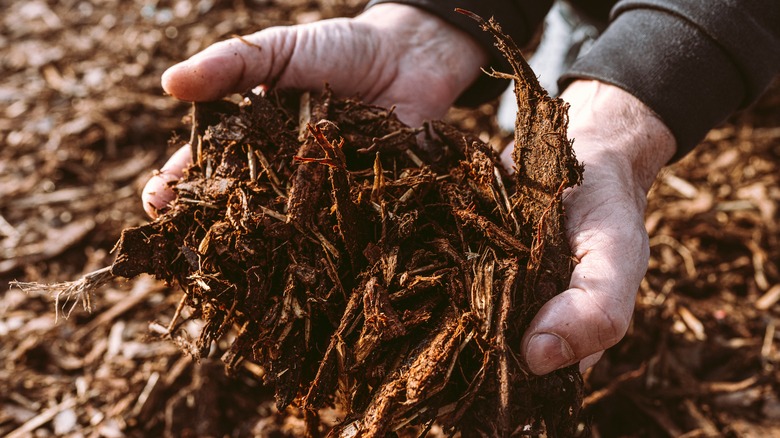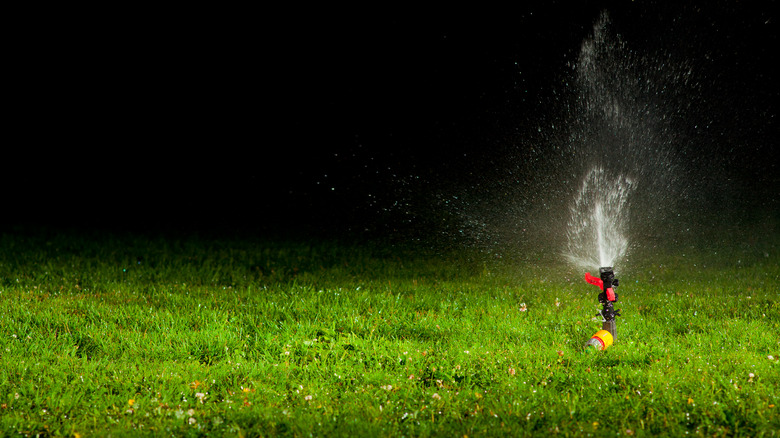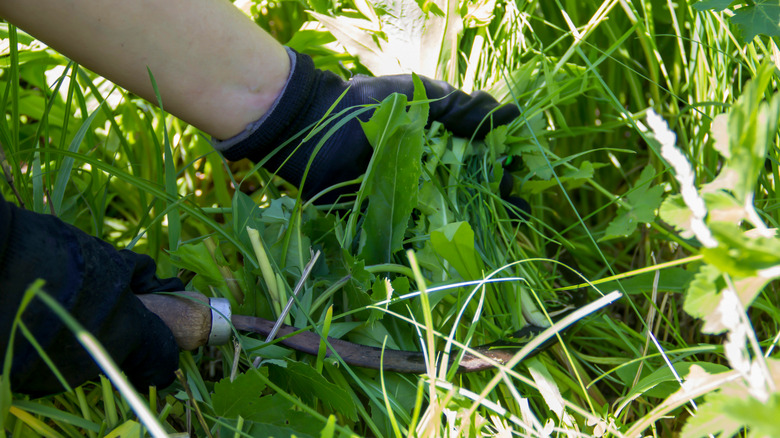Dealing With Crabgrass? Avoid Making These Common Mistakes
Crabgrass is well-known for being invasive, and if that wasn't bad enough, the weed is so aggressive that it's able to outcompete a variety of other desirable grasses, such as turfgrass. When crabgrass is present, a lawn may appear patchy, yellow, and unattractive. Unfortunately, ridding your lawn of crabgrass isn't easy and requires a great deal of effort. There are many common mistakes you'll want to avoid in order to fully eliminate this annoying weed.
When it comes to crabgrass, many gardeners create a plan of attack with the best of intentions; however, they often make the mistake of not first addressing any underlying soil conditions. Additionally, skipping pre-emergent treatments and mowing the lawn too short allows crabgrass to remain and continue to thrive in your yard. Having a full understanding of these pitfalls, and then implementing a more comprehensive approach, is the best way to banish crabgrass for good and enjoy an outdoor space that is healthy, vibrant, and weed-free all year long.
Ignoring or skipping pre-emergent herbicides
When it comes to crabgrass, one of the biggest mistakes you can make is not using pre-emergent herbicides. Once soil temperatures rise above 50 degrees Fahrenheit, crabgrass seeds begin to germinate. It then becomes much harder to control the weeds. Pre-emergents work by hindering the plant cells from growing, so that you don't have to spend as much time and effort eliminating them from your lawn. If you wait until after germination, the pre-emergent will not be effective at all and you'll need to switch to a selective post-emergent herbicide, which itself isn't as successful at eradicating the weed as the pre-emergent would be.
Lawn Care Nut recommends using Prodiamine Herbicide as your pre-emergent crabgrass treatment. Since one 50-pound bag can cover a lawn as big as 12,500 square feet, you'll likely only need to make one purchase per year. Use a seed spreader to administer the pre-emergent and then water the lawn to a depth of 1 inch to activate it. If you wait too long and need to use a post-emergent herbicide, Sod Solutions suggests using Mesotrione 4SC Select, which needs to be mixed with water and sprayed across the yard. One bottle can treat up to 48,000 square feet.
Mowing the lawn too short
While it may seem like a good idea to mow your lawn as short as you can to reduce the required frequency of seasonal mowing, this is a big mistake if you have crabgrass. Cutting the grass too short actually weakens the grass by reducing the amount of air and sunlight it's exposed to. When grass has less energy than it needs to thrive, it becomes more susceptible to being overtaken by weeds. This happens as the grass begins to thin and weeds have more space to germinate. Since the grass is weak, it is unable to compete with the weeds, allowing the weeds to take control of the space.
To maintain a healthy lawn, you'll need to increase the height of the blades on your mower. Make sure the blades are nice and sharp and that you only mow when the grass is dry. A grass height between 2.5 and 3 inches is ideal, so keep that in mind when setting the height of your blades. It's also best to never cut more than ⅓ of the total height of the grass when you mow.
Overwatering the lawn can cause weak grass root systems
Another popular mistake when dealing with crabgrass is overwatering the lawn. You may believe that keeping the grass well-supplied with water will leave it looking lush and healthy; however, this isn't the case. When you water frequently, you aren't watering deeply. Grass roots remain shallow, as they don't need to extend farther to get a drink. This allows crabgrass to germinate and grow, leading it to eventually overpower your weakened grass.
Instead of watering frequently at a shallow depth, switch to watering infrequently, but at a greater depth. This will encourage the grass roots to grow healthy and strong and discourage the germination of the crabgrass. West Harris County Regional Water Authority also suggests using a sprinkler system that doesn't just mist the lawn, but rather delivers water more like a rainfall. Additionally, they advise getting a system that has a rain sensor, as this will prevent watering when the ground has already been fed naturally by a storm.
Ignoring bare spots in your lawn
There are several reasons one may begin to experience bare spots in the yard. This can occur as a result of dog urine, salt run over from sidewalks, or winter drying. No matter the cause, it's a mistake to ignore these spots, as bare spots are prime areas for crabgrass to take root. The available space and abundance of sunlight provide the weeds with everything they need to germinate and grow.
Reseeding these bare spots either in the fall or early spring is the best way to prevent crabgrass from establishing. Begin by removing the dead grass that's resting above the soil. Mix grass seed with a bit of garden soil and then spread it out across the bare spot. Water the area daily — unless it rains — and watch for germination. Once the seeds have taken root, you can resume watering the lawn as you normally would.
Not adjusting the soil pH
According to Eden, most grasses thrive with a soil pH between 6.0 and 7.0. If your soil pH is too low for the specific type of grass you're growing, it's a big mistake to avoid correcting the issue. Unbalanced soil pH can hinder lawn health and help weeds, such as crabgrass, thrive. You'll need to obtain a soil test kit, which you can get online via Amazon, or through your local agricultural university. Most garden centers will also have soil test kits on hand. Once you have your numbers, you can begin to adjust the soil to keep crabgrass at bay.
There are several ways to increase soil pH, so that the yard is no longer providing an acidic environment for crabgrass. Homeowners can spread wood ashes across the lawn during the winter, as well as work the ashes into the soil before planting in the spring. There's also the option to apply dolomitic lime at a rate of 50 pounds for every 1,000 square feet of lawn. This is an excellent option if you only need to increase soil pH by 1 point. Warning: Whichever method you choose to raise your soil pH, make sure the amendment does not touch your garden plants, trees, or shrubs
Neglecting yearly aeration and letting the soil compact
Bare patches and low soil pH are not the only conditions that promote crabgrass growth. Not taking time each year to aerate the soil will result in the ground becoming more compact. Since compacted soil leaves your lawn in an unhealthy state and more vulnerable to a crabgrass invasion, you don't want to neglect performing this annual chore.
When you aerate your lawn annually to improve nutrient uptake and root growth depends upon the type of grass you have growing in your yard. Cool-season grasses are best aerated in the fall, while warm-season grasses should be scheduled for aeration late in the spring. Small yards can be aerated with a spading fork to a depth of about 4 inches. Larger properties will require the use of a core aerator, which can be rented from most big-chain garden centers. If any reseeding needs to be done, it's best to complete this task after you've finished aerating the soil.
Using contaminated mulch or topsoil
Another common mistake is transporting the crabgrass to your property unknowingly. Introducing new materials, such as mulch and topsoil, without checking them can actually result in crabgrass seeds hitching a ride to invade your lawn. Additionally, if you work as a carpenter or landscaper, you can even bring the seeds back home on the bottom of your shoes or within a piece of equipment.
It's imperative that you always use clean, high-quality mulch and topsoil, making sure they were not obtained from any previous property that had evidence of crabgrass growth. Shake off your shoes and rinse down your equipment before you head back home. Should a patch of crabgrass still make its way onto your property, you can remove it by hand using a garden spade. Then reseed the area and focus on the other healthy lawn practices mentioned above, such as mowing at a higher height and watering less frequently, but at a greater depth.
Watering your lawn at night
When you water your lawn is just as important as how much you water it. Setting your sprinkler system to go off in the evenings is a big mistake. Evening watering can lead to moisture sitting on the grass for long periods of time, as the sun is no longer beating down on the earth to allow for the blades to dry. Water that is allowed to pool on the blades of grass promotes disease, which in turn weakens the lawn to make conditions more favorable for crabgrass growth. Pests, such as slugs, are also attracted to the water on the grass blades. After taking a drink, the slugs will begin feasting on the grass itself, leaving your lawn in a weakened state and unable to fight off any weeds that are trying to take root.
Instead of using your sprinkler at night, set it to go off first thing in the morning. This gives the grass enough time to drink the moisture before the sun dries up any remaining water. Through doing this, fungal diseases are prevented, pests are deterred, and your lawn remains healthy and free of annoying crabgrass.
Not using the right tools
Using inappropriate or dull tools can damage the grass blades covering your lawn. The edges of the blades are left nicked, serrated, and uneven, making them more susceptible to diseases. This is because instead of using its energy to grow and thrive, the blades must divert the energy toward repairing their tips. The open cuts also provide a way for fungi and bacteria to enter. As we learned earlier, unhealthy grass leaves room for crabgrass to take over, so you need to make sure you're not using the wrong tools, or tools that aren't nice and sharp.
In the event that your grass has already suffered from using dull tools, it's best to give the grass some time to recover before attempting to correct the issue. While you're waiting for the lawn to heal, have the blades on your mowing equipment sharpened. You can do this yourself or hire a professional. Invest in a few new tools that are specifically designed for weed removal, as these are more effective at removing crabgrass without harming your surrounding grass.
Ignoring weather forecasts when applying herbicides
When marking a date on your calendar to apply herbicides to rid your property of crabgrass, it is a mistake to ignore the weather forecast. There are two conditions that affect the effectiveness of the herbicide application: low temperatures and rainstorms. The University of Nebraska-Lincoln points out that certain herbicides, like glyphosate, don't work as well to control weeds once temperatures drop below 60 degrees Fahrenheit. This is because the weeds aren't growing as rapidly, and therefore, aren't consuming the herbicide as quickly as they would during periods of active growth. Rainfalls also thwart herbicides from being as effective, as they can push the chemicals so far into the soil that the weeds can't reach them.
While you will want to plan ahead to apply the herbicide during the correct season, you'll need to be flexible with your date. Be prepared to either move the application up a few days or push it back a few days. You need a 48-hour window where no rain is expected to occur. Make sure the temperature on your preferred date also falls within the suggested range listed on the herbicide you plan to use. This way, less effort is needed to fully eradicate the crabgrass from your property.
